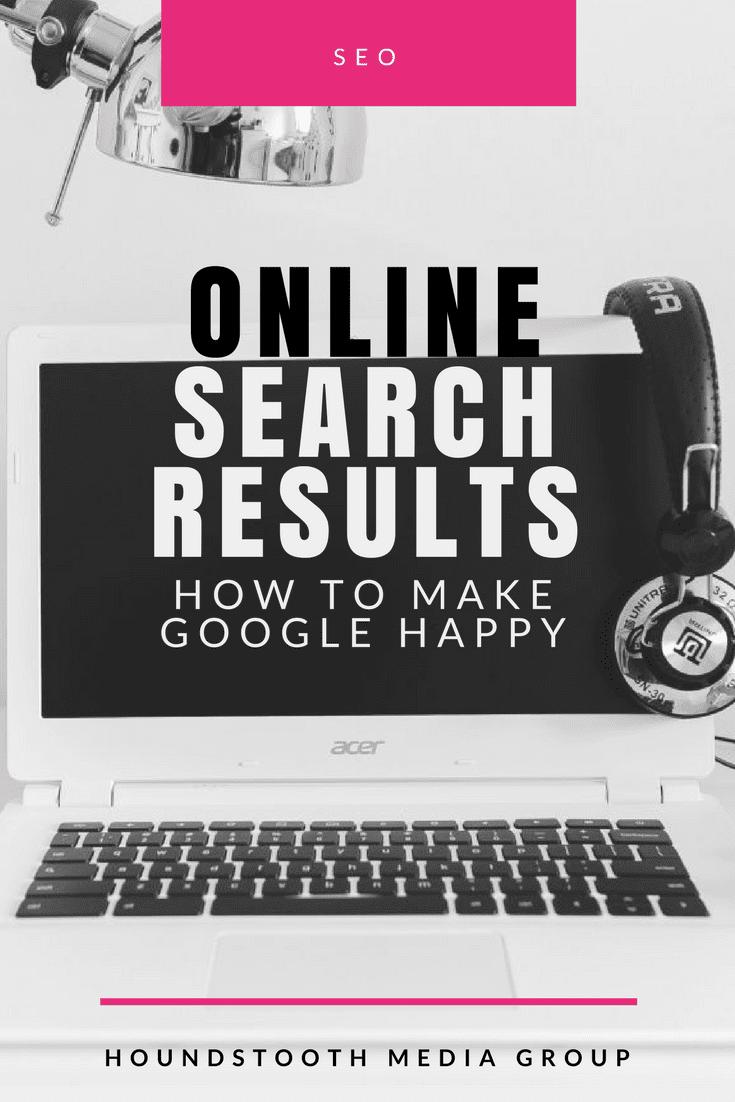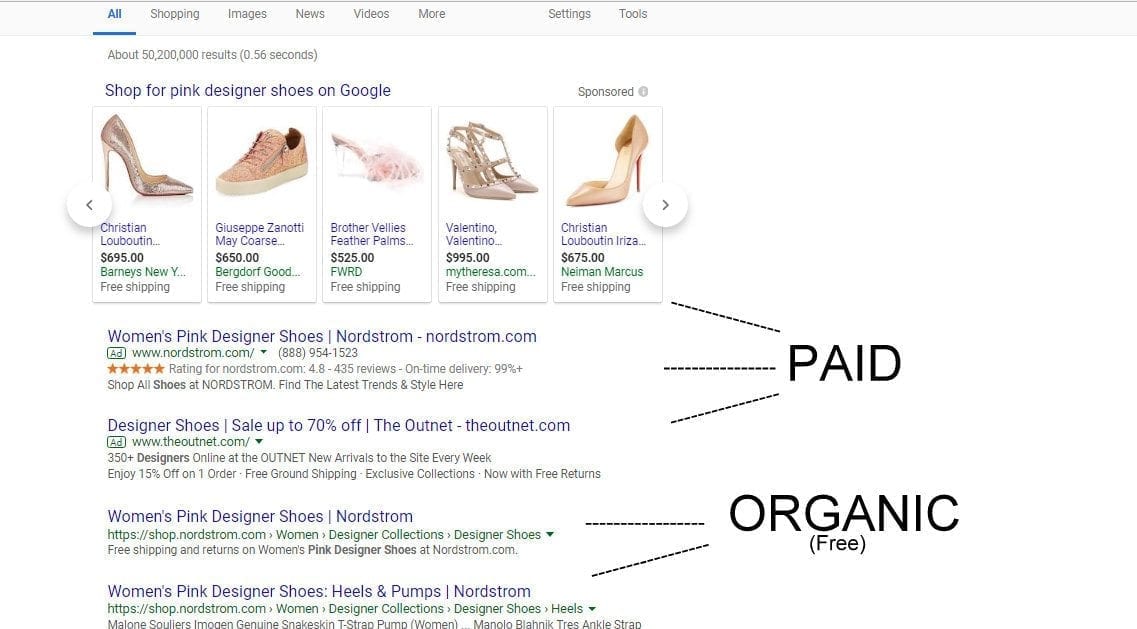As a consumer, how often do you scroll past the first page of search results? It’s possible you’ll go to page two, but rarely do we ever venture any further. Everyone wants to show up on the first page of the search results, and there are ways to get there without having to pay for it. Organic search results are the key to being found online without spending a dime.

Paid vs Organic Search Results
There are two ways to get to the top of search results: ad placement or a great SEO strategy. What’s the difference between paid and organic search? It’s like paying for friends versus being the kind of person that other people enjoy being around. Let’s search for pink designer shoes to get a better idea of the difference between the two.

There are several paid placements, but Nordstrom shows up in both the paid and the organic search results. They paid to be at the top and also earned their way to the top through organic SEO. Nordstrom is covering their bases because they have a ridiculous marketing budget and can afford to do so. However, for most of us it makes sense to have our foundations properly set before starting to trying to buy your way to the top.
So how do you begin building the proper SEO foundation? Taking advantage of organic search means you need to take a moment to understand Google.
If You Make Google Happy, Google Will Make You Happy
Google is happy when their customers are happy. In addition to everything else that Google is, let’s look at it in the simplest of terms: Google is a business that provides search results for its users. They want to make sure they provide quality search results and that their customers are satisfied. If someone searched for baseball cards but got recipes for lemon meringue pie instead, they would soon choose a different search engine like Yahoo or Bing, right?
The way Google knows if your site is about baseball cards or pie recipes is through indexing. Google has gazillions of little spiders, or bots, that crawl the internet and take inventory of your site. These bots want to know:
- Who are you?
- What products and services do you provide?
- Who is your ideal customer?
The more clear and concise the language on your website, the more valuable the information is to the Google spiders, and the happier Google will be.
Indexing How-To
To understand how to index, let’s stick with baseball cards as an example. Imagine you provide a service where you buy, sell, and trade cards, as well as appraise the cards, run local baseball card events, and sell other baseball related merchandise. The text on your website only refers to Bob’s Baseball Cards and doesn’t really go into the specifics of all the services you offer, so Google can only index your site in the most general way: baseball cards.
If someone searched for baseball card collector events, you will not be in the first page of search results because Google doesn’t know you host them. You didn’t give Google all the information, so now Google can’t make you happy. The more information Google has about your site, the more quickly and accurately they can index you and you can “get found” in those search results. Your ideal customer has a question or they have a problem. Make sure that your site spells out the answer or solves the problem.
One More SEO Tip
Another thing that makes Google happy is telling it what your photos and videos are about. Google spiders can’t watch videos or look at photos – they can only read text! You need to make sure you tell the spiders what your photo is about. But how?

In order for any of these pink shoes to turn up in a Google image search, the image file had to be renamed to include a description of what is in the picture, or they had special tags called ALT tags assigned to it, or both. ALT tags might be a bit tricky for some, but everyone is capable of renaming a photo file. No one searches for IMG_1234, but if you rename that file pink designer sandals, you can get found in an image search. Since images are clickable and take a Google user directly back to the website it’s from, your organic SEO strategy should include image alt attributes.
In a nutshell, tell Google as specifically as possible who you are and what you do, and they’ll help your ideal customers find you. If you’re still stumped about how to make Google happy, we can help. Our SEO Audit will identify big issues (like missing image alt tags) and present you with solutions. Let us show you how your website can land at the top of organic search results.